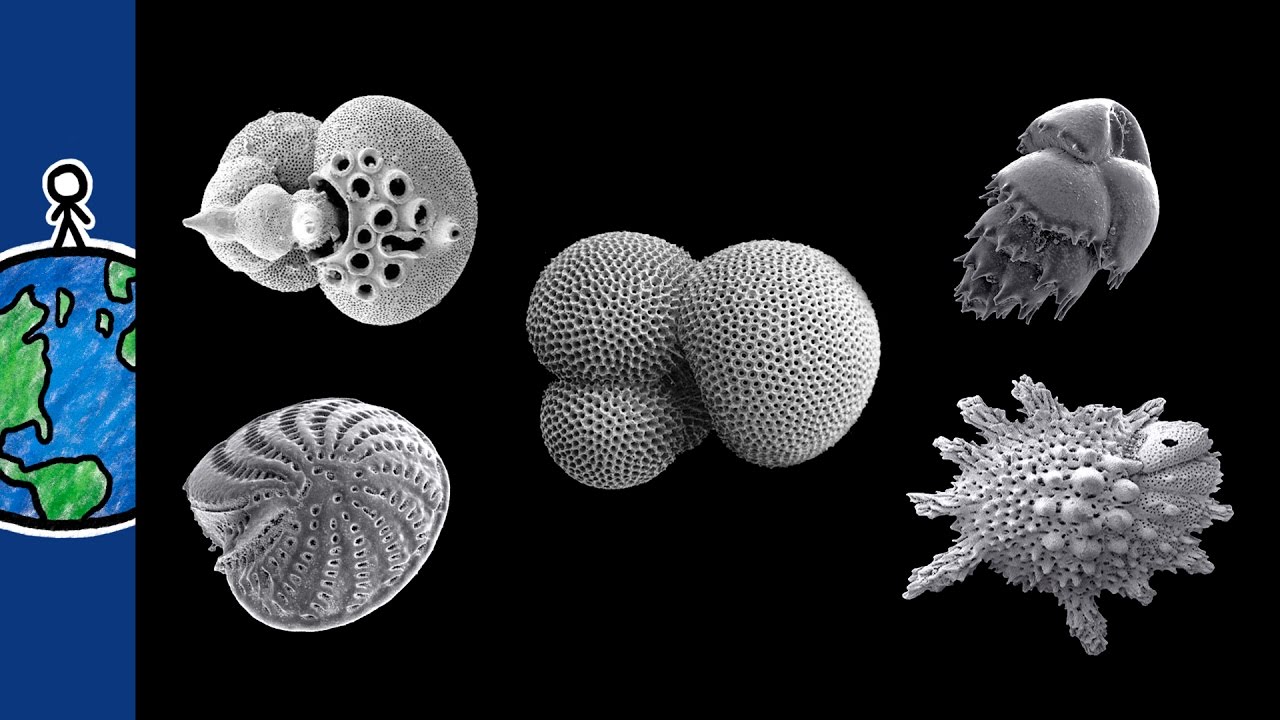Foraminifera – tiny, single-celled marine life forms – build gorgeous houses that record how much ice there is on the planet.
This video was supported by the Heising-Simons Foundation. To learn more, visit
Special thanks to Professor Lee Kump of Penn State University and Professor Howie Spero of UC-Davis for lending their advice, expertise, and patience to the making of this video!
Thanks also to our supporters on
Help translate this video:
___________________________________________
FYI: We try to leave jargon out of our videos, but if you want to learn more about this topic, here are some keywords to get your googling started:
foraminifera: a class of single-celled marine organisms – protists, not animals – that live either near the surface (“planktonic foraminifera”) or on the seafloor (“benthic foraminifera”). Called forams for short.
climate proxy: something that tells us what the climate was like in the past, such as data from the thickness of tree rings, the composition of gases trapped in ancient ice, historical human records of annual bloom times (eg the long-recorded bloom dates of cherry trees in Kyoto, Japan), or the ratios of certain stable isotopes found in shells, corals, or other biogenic substances
oxygen-18: a stable isotope of oxygen that contains 8 protons and 10 neutrons, rather than the 8 protons and 8 neutrons of “regular” oxygen (oxygen-16). The ratio of oxygen-18 to oxygen-16 in seawater (and sea shells) can be used as a proxy for the global average temperature
ice sheet: a permanent layer of ice covering land, as found in polar regions (and as distinguished from sea ice, like the stuff that floats at the north pole in the Arctic ocean). Combined, the Greenland and Antarctic ice sheets contain more than 99% of the total freshwater ice on Earth.
___________________________________________
If you liked this week’s video, we think you might also like:
The Tiniest Fossils by the AMNH
Orbulina feeding on Artemia
Mysterious Web Masters
___________________________________________
Credits (and handles):
Script Writer: Emily Elert (@eelert)
Script Editor: Kate Yoshida (@KateYoshida)
Video Illustrator: Ever Salazar (@eversalazar)
Video Director: Emily Elert (@eelert)
Video Narrator: Emily Elert (@eelert)
With Contributions From: Henry Reich, Alex Reich, Peter Reich, David Goldenberg
Music by: Nathaniel Schroeder:
Image credits:
Cribrohantkenina inflata – Paul Pearson
Elphidium macellum, Bulimina and Calcarina hispida by foraminifera.eu
Globigerina – Hannes Grobe
_________________________________________
Like our videos?
Subscribe to MinuteEarth on YouTube:
Support us on Patreon:
Also, say hello on:
:
:
And find us on itunes:
___________________________________________
REFERENCES
Hays, J. D., Imbrie, J., & Shackleton, N. J. (1976). Variations in the Earth’s Orbit: Pacemaker of the Ice Ages. Science, 194(4270), 1121-1132.
Abstract:
Kendall, C., & McDonnell, J.J. (1998). Fundamentals of Isotope Geochemistry. In Isotope Tracers in Catchment Hydrology (pp. 51-86). Eds: Elsevier Science B.V., Amsterdam.
Link:
Kucera, M. (2007). Planktonic Foraminifera as Tracers of Past Oceanic Environments. In Developments in Marine Geology, Volume 1, (pp. 213-262).
Link:
NOAA National Centers for Environmental Information, State of the Climate: Global Analysis for Annual 2015, published online January 2016, retrieved on November 28, 2016 from
Sachs, J., & Steig, E. (2010) Lecture on Isotopes and Air Temperature. University of Washington, Seattle, Washington.
Link:
Shanahan, T. (2010). Lecture on Oxygen Isotopes. University of Texas, Austin, Texas.
Link:

